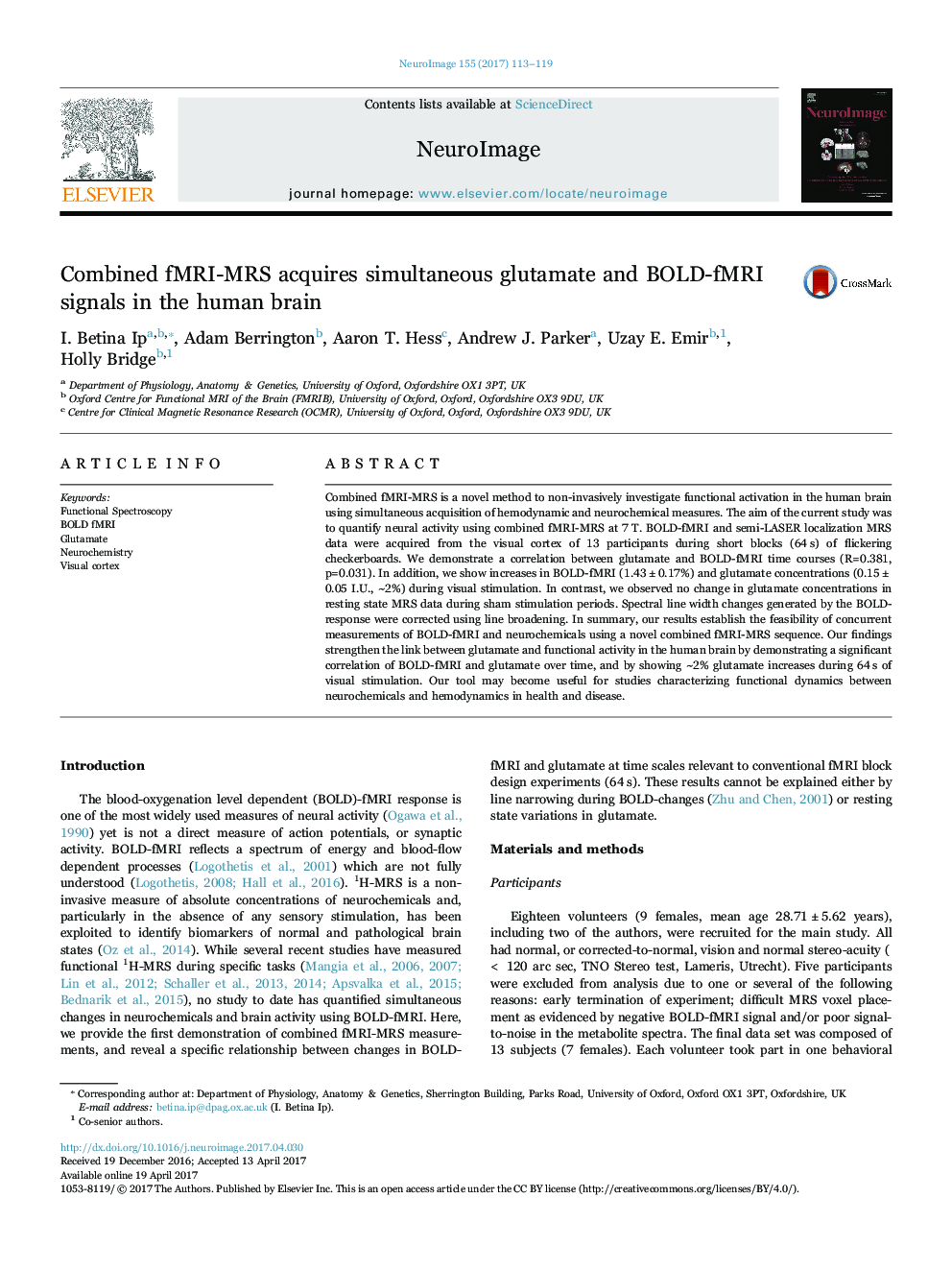| Article ID | Journal | Published Year | Pages | File Type |
|---|---|---|---|---|
| 5631124 | NeuroImage | 2017 | 7 Pages |
â¢Novel MRI sequence measures hemodynamics and neurochemistry in same TR.â¢Stimulation block duration relevant for functional experiments (64s).â¢BOLD-fMRI and glutamate time courses correlate during functional stimulation.â¢Visual stimulation increases glutamate concentrations.â¢Useful to study fundamental relationship between hemodynamics and neurochemistry.
Combined fMRI-MRS is a novel method to non-invasively investigate functional activation in the human brain using simultaneous acquisition of hemodynamic and neurochemical measures. The aim of the current study was to quantify neural activity using combined fMRI-MRS at 7 T. BOLD-fMRI and semi-LASER localization MRS data were acquired from the visual cortex of 13 participants during short blocks (64 s) of flickering checkerboards. We demonstrate a correlation between glutamate and BOLD-fMRI time courses (R=0.381, p=0.031). In addition, we show increases in BOLD-fMRI (1.43±0.17%) and glutamate concentrations (0.15±0.05 I.U., ~2%) during visual stimulation. In contrast, we observed no change in glutamate concentrations in resting state MRS data during sham stimulation periods. Spectral line width changes generated by the BOLD-response were corrected using line broadening. In summary, our results establish the feasibility of concurrent measurements of BOLD-fMRI and neurochemicals using a novel combined fMRI-MRS sequence. Our findings strengthen the link between glutamate and functional activity in the human brain by demonstrating a significant correlation of BOLD-fMRI and glutamate over time, and by showing ~2% glutamate increases during 64 s of visual stimulation. Our tool may become useful for studies characterizing functional dynamics between neurochemicals and hemodynamics in health and disease.
Graphical abstractDownload high-res image (277KB)Download full-size image
